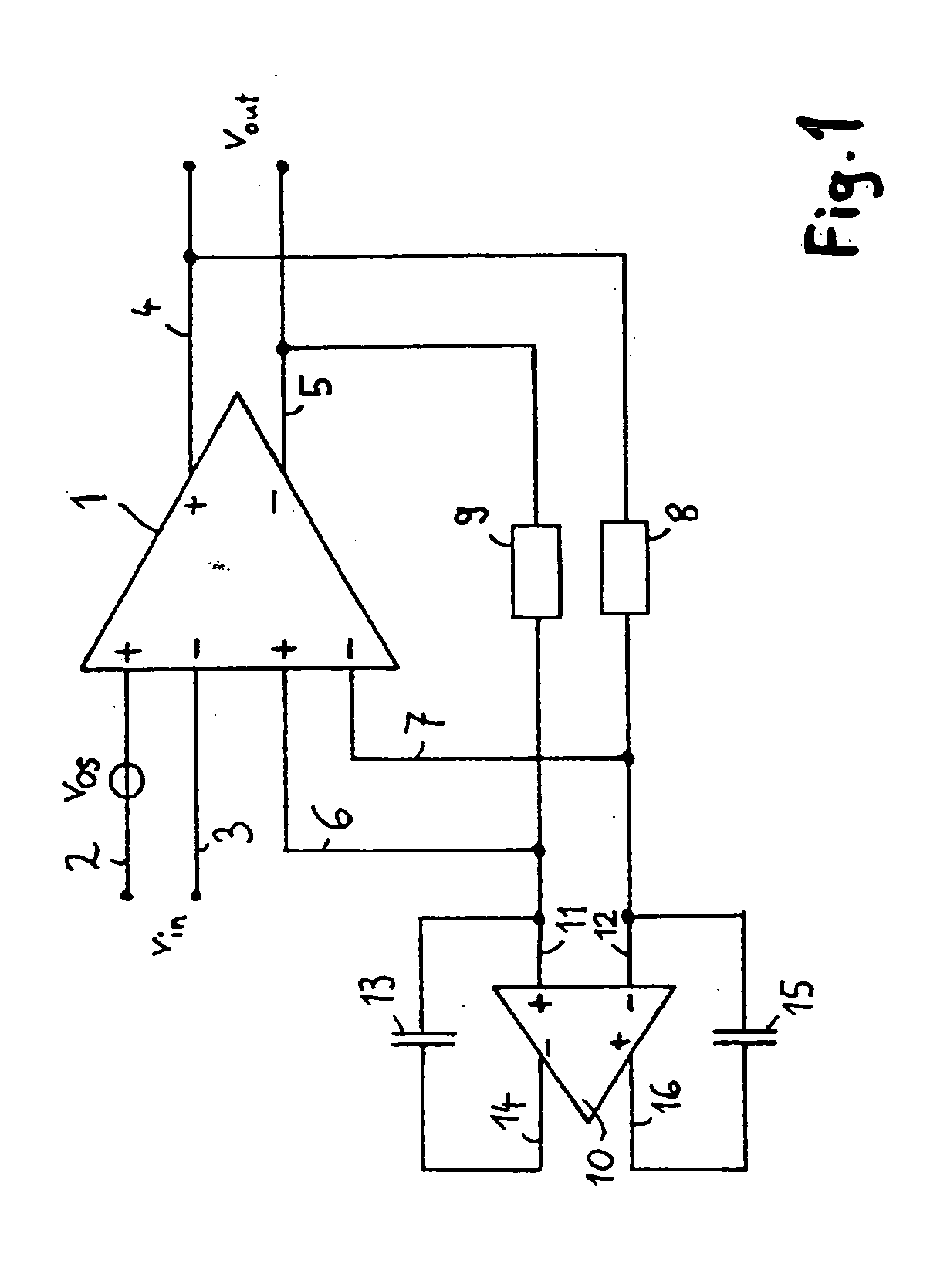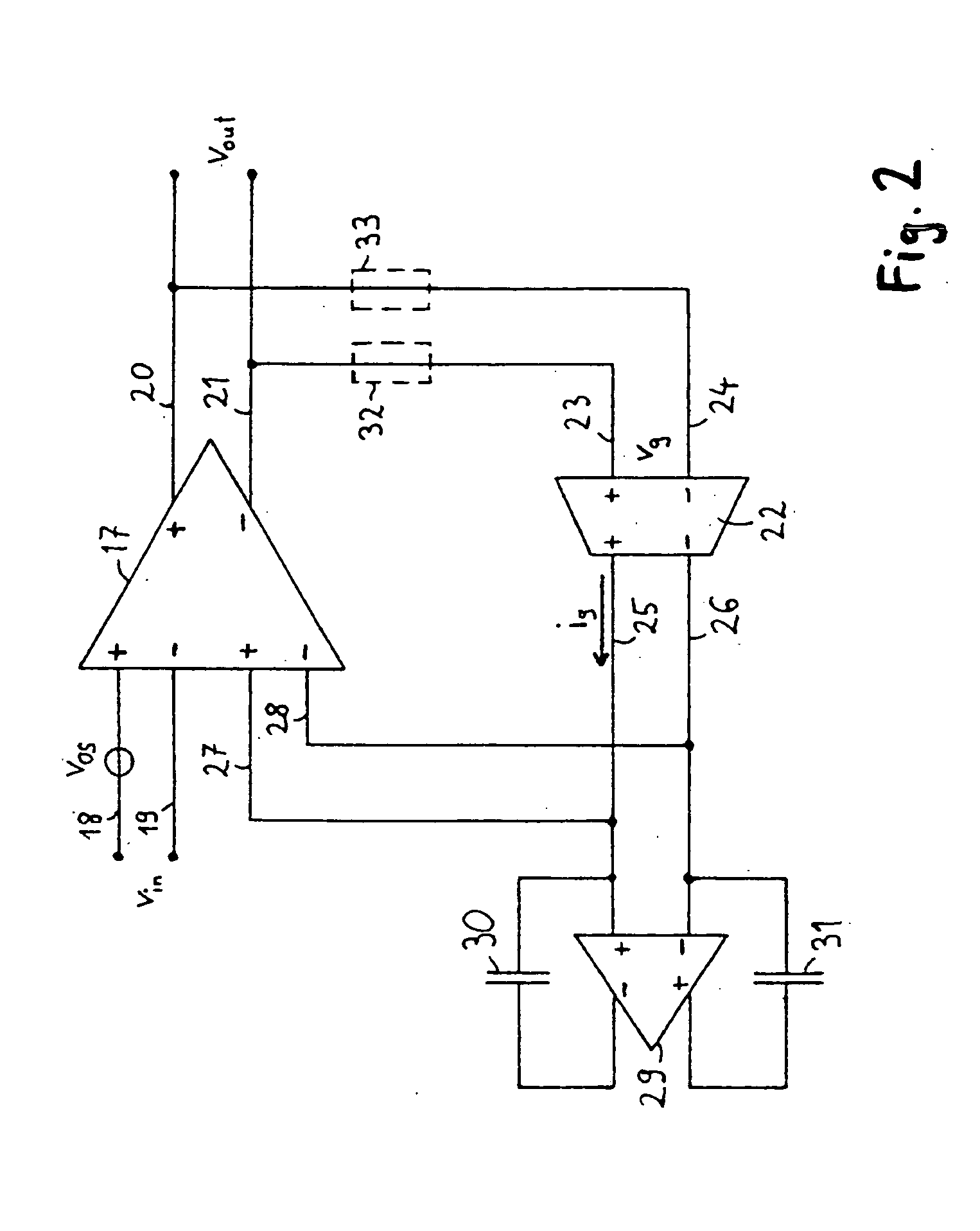Amplifier with low pass filter feedback
a low-pass filter and amplifier technology, applied in the direction of amplifiers, electrical apparatus, pulse automatic control, etc., can solve the problem that the capacitors require a lot of space on the silicon chip, and achieve the effect of extending the useable frequency rang
- Summary
- Abstract
- Description
- Claims
- Application Information
AI Technical Summary
Benefits of technology
Problems solved by technology
Method used
Image
Examples
Embodiment Construction
[0033]FIG. 1 shows a first embodiment of an amplifier according to the invention. Amplifiers are associated with a problem in that an input offset vos is amplified at the same time, which results in an undesired steady component in the output signal of the amplifier. In extreme cases an amplifier can even be overloaded by its own offset. This problem occurs in particular in the case of broadband amplifiers with bandwidths of for example 8.5 GHz, because due to the high-frequency signal fractions the transistors have to be very small. In such amplifiers the statistical fluctuations in the transistor threshold voltages cause an input offset of up to 10 mV. With amplification of approximately 30 dB, this would lead to a steady component of approximately 300 mV at the output, i.e. approximately half of the dynamic range.
[0034] The amplifier 1 shown in FIG. 1 comprises first inputs 2, 3, to which the input signal vin is applied. The input signal vin is amplified by the amplifier 1 accor...
PUM
 Login to View More
Login to View More Abstract
Description
Claims
Application Information
 Login to View More
Login to View More - R&D
- Intellectual Property
- Life Sciences
- Materials
- Tech Scout
- Unparalleled Data Quality
- Higher Quality Content
- 60% Fewer Hallucinations
Browse by: Latest US Patents, China's latest patents, Technical Efficacy Thesaurus, Application Domain, Technology Topic, Popular Technical Reports.
© 2025 PatSnap. All rights reserved.Legal|Privacy policy|Modern Slavery Act Transparency Statement|Sitemap|About US| Contact US: help@patsnap.com



